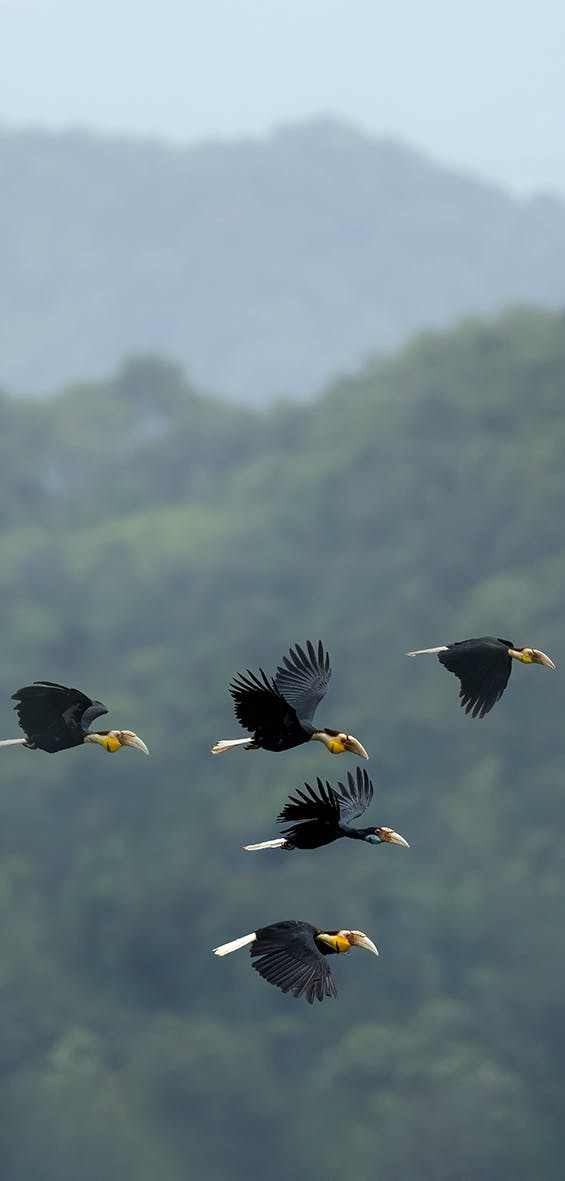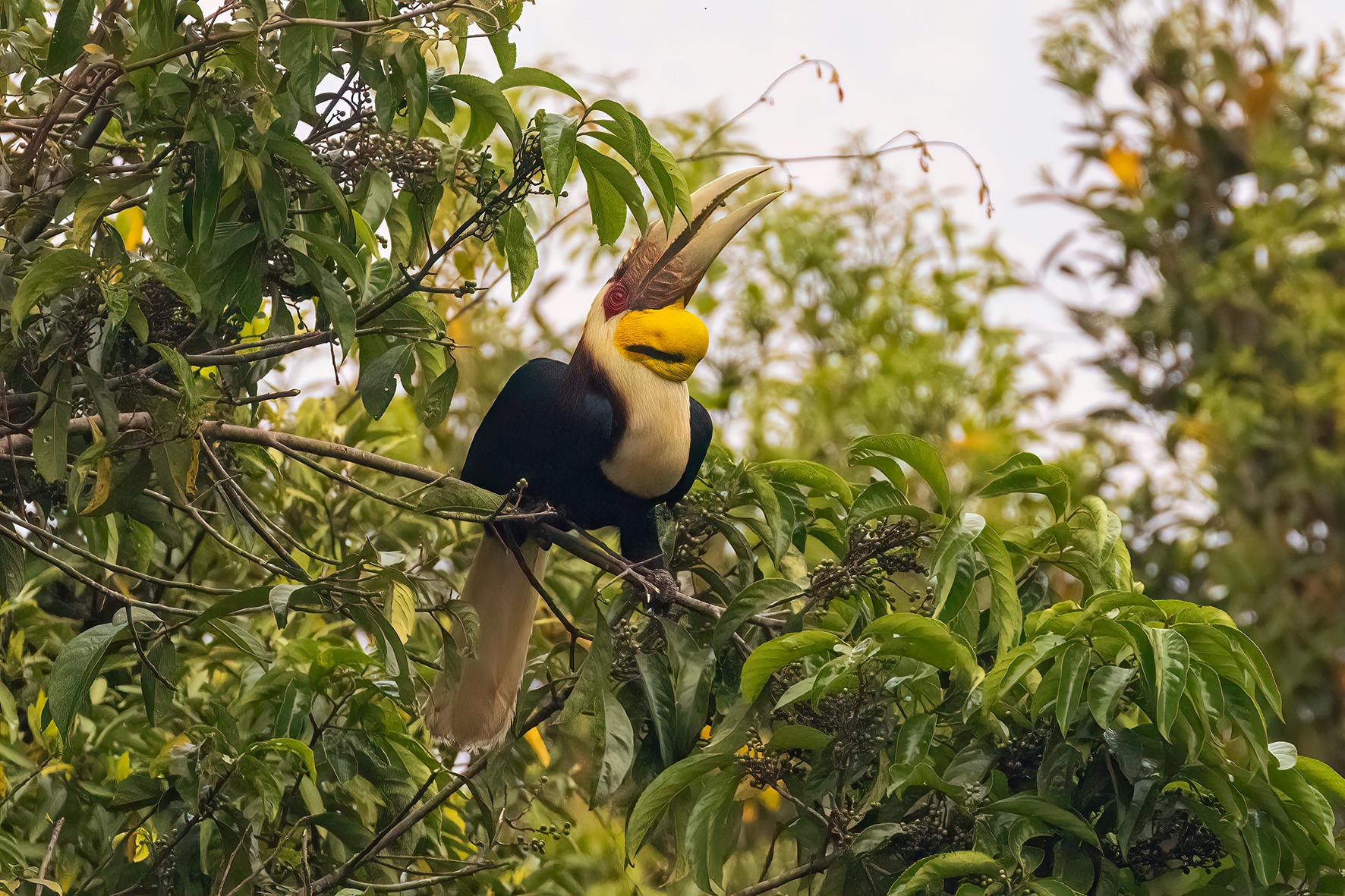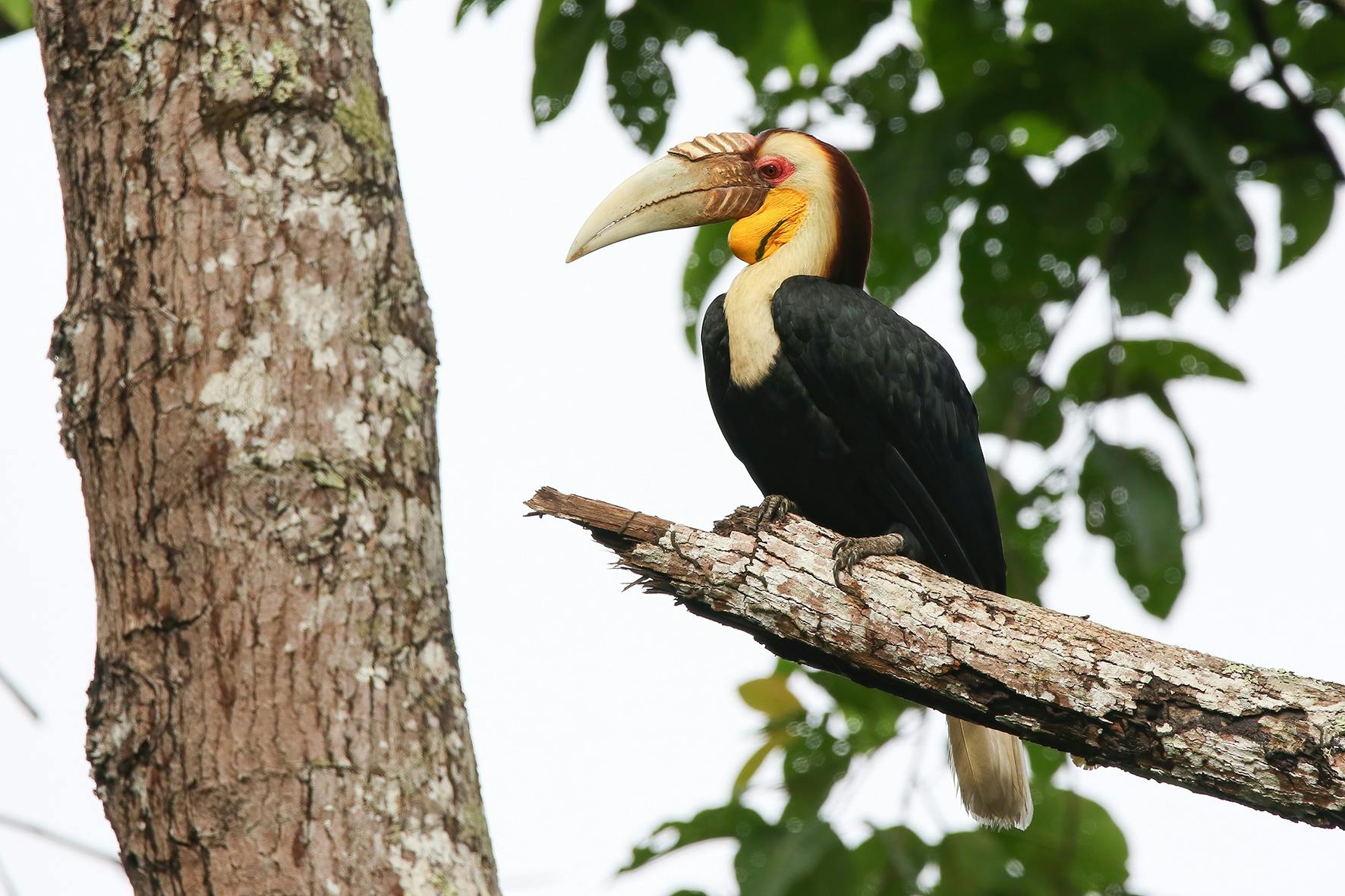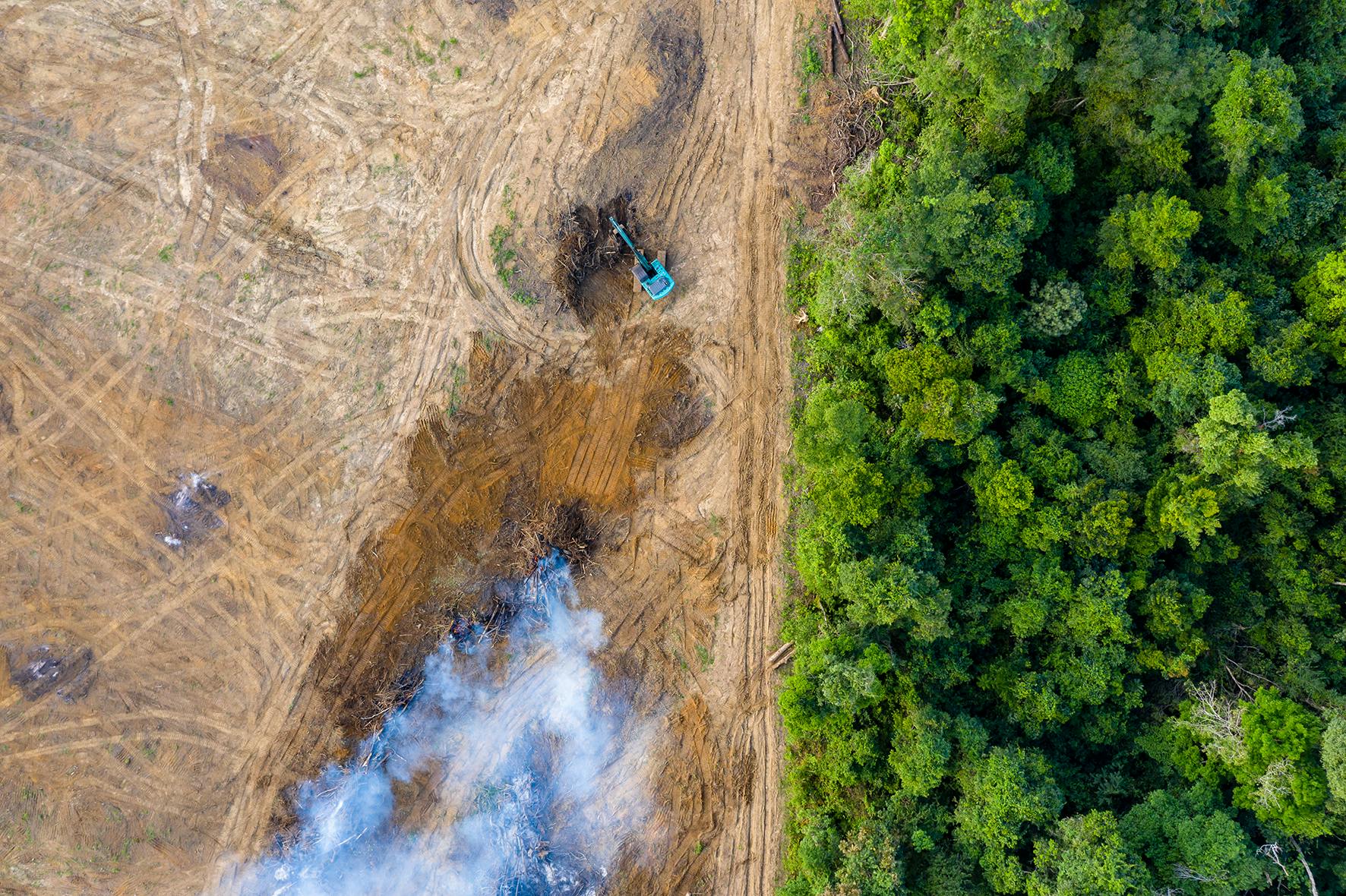Wreathed hornbill




Wreathed hornbills are quite large birds with black wings and a white tail. The males are recognizable by their light yellow head and bright yellow throat pouch. Young females also have a yellow throat pouch, but after about 2 years, it turns blue. Like other species of hornbills, the wreathed hornbill has a 'horn' on top of its long, curved beak. In the case of the wreathed hornbill, the horn is quite flat and ridged.

40 jaar
Schouderhoogte: ± 150 centimeter
Lengte: 75 – 85 centimeter
♀ 1,4 – 2,7 kg
♂ 1,6 – 3,6 kg

Wreathed hornbills are true fruit eaters. They consume fruits from more than 30 different types of plants. This makes them very important for the plants in the rainforest, as they help spread the seeds of these plants. They cannot digest these seeds and therefore excrete them whole. Between eating and defecating, hornbills can fly distances of up to 10 kilometers. This way, the seeds end up in new locations, contributing to the diversity of the rainforest.

Wreathed hornbills nest in cavities of old, tall trees, about 18 to 28 meters above the ground. When a pair has found a nesting site, the female enters the cavity and together they seal her inside. They use mud, dung, and fruit peels for this task, protecting the nest from predators. As long as the female is enclosed, the male provides food. He feeds her and the chick through a slit in the nest, which only her beak can fit through. Only when the chick is large enough to fly does the mother leave the nest.
Wreathed hornbills are naturally found in Southeast Asia, from India and Bhutan to Vietnam and Indonesia. There, they live in the tall trees of dense tropical rainforests. During the breeding season, they mostly inhabit low-lying areas. The rest of the year, they are mainly found in mountainous rainforests, up to about 2.5 kilometers in elevation.

Hornbills, like the wreathed hornbill, are highly dependent on natural rainforests. They usually stay away from cities and logged forests. This makes them vulnerable because the rainforests in Southeast Asia are shrinking. Hornbills are also hunted for their beaks, which the local population uses as decoration for traditional headdresses. Therefore, Diergaarde Blijdorp supports a conservation project in the Pakke Tiger Reserve in Northeast India, where the local population protects nests from hunters.
The wreathed hornbills in Blijdorp have a high enclosure with many branches to perch on. At the top of their enclosure hangs a barrel where the female can nest. For this purpose, the caretakers specifically lay down clay in the enclosure. This way, the pair can wall in the female when she's going to breed. The hornbills are fed vegetables and fruit. During the breeding season, they also receive beetle larvae, so they get enough protein to lay eggs.